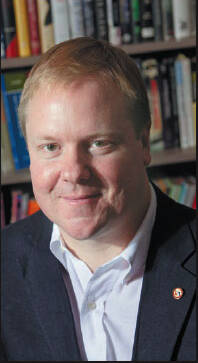You heard it here first: I predict China’s President Xi Jinping will be Time magazine’s Person of the Year. Certainly some will argue for German Chancellor Angela Merkel because of her response to the European refugee crisis. Russia’s Vladimir Putin’s moves on Syria and general annoyance of the United States will mean he’ll also receive some consideration.
But it’s not Xi’s oft-cited similarity to Mao Zedong that will put him on the cover. It’s his political resemblance to the late U.S. President Ronald Reagan. Xi’s likeness to Reagan is neither physical nor stylistic.
The Teflon coating he seems to be accruing is not a result of dodging scandals, as Reagan did in the 1980s. Instead, Xi has moved from strength to strength in 2015, despite an increasing number of challenges both domestic and international, maintaining a firm line on China’s world view and demand to be treated as a superpower. Xi is increasingly resistant to criticism and grows more confident in executing his policy goals, including fighting corruption, enforcing China’s territorial claims in the South China Sea and keeping the public calm as the country faces its first long-term economic slowdown in over 30 years.
This autumn Xi met most of the world’s most important leaders, either traveling abroad or welcoming them to Beijing. Xi hosted Putin, along with South Korean President Park Geun-hye, during China’s celebration of the 70th anniversary of the end of World War II in early September, complete with large-scale military parade.
Xi rode that wave of pomp and circumstance to the United States, where he met President Barack Obama. The meeting demonstrated part of what has become Xi’s style: concrete commercial results delivered from countries with which China has otherwise complicated, if not difficult, relations. Although military relations between the two countries have become tense since the visit due to China’s expansion of a disputed island in the South China Sea, China bought $38 billion worth of Boeing aircraft during the visit, providing each leader with evidence that the U.S./China trade relationship was on track and benefitting workers on both sides of the Pacific.
Most surprising was Xi’s trip to the United Kingdom in October, where Prime Minister David Cameron treated the Chinese leader as if he were visiting royalty. Cameron was later criticized for his supplicant’s posture throughout the visit, intent on positioning the United Kingdom as a worthy trade partner and tourist destination. The two sides signed business deals worth about £40 billion ($60.2 billion).
Xi returned to Beijing, where he met Germany’s Merkel. She was able to fly home with an order for 30 Airbus jets, worth €17 billion ($18.57 billion). As if a queue had formed outside of the Chinese leadership complex Zhongnanhai, French President Jacques Hollande followed a few days later. While he visited Beijing mostly to discuss climate change, he went back to France with a $22 billion deal for nuclear waste recycling.
Only a leader with Xi’s confidence and strength could undertake his next meeting: with Taiwan Republic of China President Ma Ying-jeou in Singapore on Nov. 7. It’s the first time since 1949 that leaders from the two sides met. Ma, representing the Kuomintang, currently Taiwan’s ruling party and the nationalist force that “lost” China in ’49, subscribes to the “One China Principle”—that there is only one China which includes Taiwan. He has enjoyed a friendly and productive relationship with the People’s Republic, reducing military tensions and resuming direct flights. The two agreed to refer to each other as “Mister” rather than “President.” Although both sides have worked hard to minimize expectations, it’s a boost for Ma and the K.M.T., who have fared poorly in recent elections and may still lose the presidency in January.
All of this comes as Xi brushed off a $2 trillion drop in China’s stock markets during the summer and a slowing economy. Nor did he flinch as the U.S. Navy began patrols within 12 miles of Chinese-expanded islands in the South China Sea. In late October, China’s government approved its 13th Five-Year Plan, a central economic blueprint for 2016-2021, which included a move designed to alter the nation’s workforce while maintaining social stability: giving all of China’s couples the opportunity to have two children after 35 years of the one-child policy.
For Xi, it all seems another day at the office. As it would, for the person of the year.








